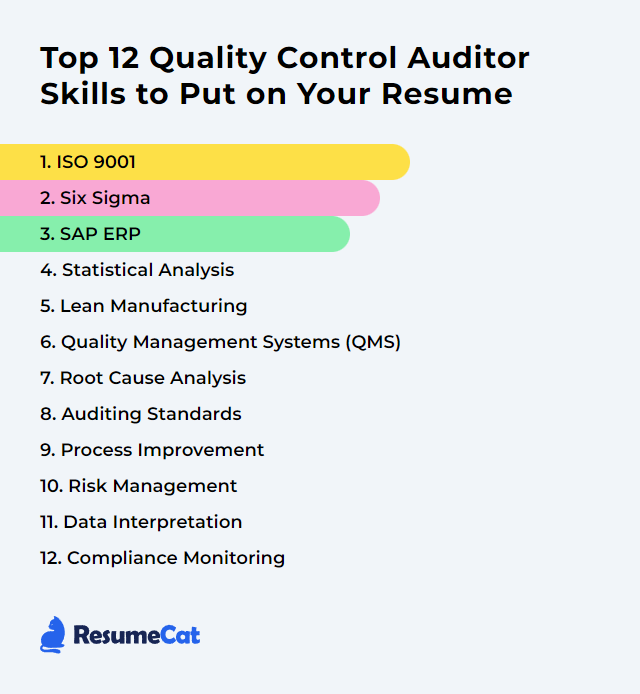Top 12 Quality Control Auditor Skills to Put on Your Resume
In today’s crowded job market, a Quality Control Auditor needs more than sturdy technical chops. You need a sharp mix of process rigor, systems fluency, and an eye for patterns that others miss. The twelve skills below deserve a bright spotlight on your resume—each one signaling your ability to protect standards, drive improvement, and keep quality from drifting.
Quality Control Auditor Skills
- ISO 9001
- Six Sigma
- SAP ERP
- Statistical Analysis
- Lean Manufacturing
- Quality Management Systems (QMS)
- Root Cause Analysis
- Auditing Standards
- Process Improvement
- Risk Management
- Data Interpretation
- Compliance Monitoring
1. ISO 9001
ISO 9001 defines what a robust quality management system must look like. It anchors customer focus, leadership, risk-based thinking, and continual improvement. Current practice is based on ISO 9001:2015, with a 2024 amendment emphasizing consideration of external factors such as climate-related issues within organizational context and interested parties.
Why It’s Important
It gives you a shared language and a disciplined framework to test process effectiveness, prove conformity, and push continuous improvement without guesswork.
How to Improve ISO 9001 Skills
Work the PDCA cycle relentlessly—plan, try, check, adjust—then lock in gains with updated controls.
Strengthen risk-based thinking: identify process risks and opportunities, tie them to controls and KPIs, and review them during management reviews.
Upgrade internal audit programs: risk-prioritized plans, evidence-based findings, and clear follow-through on corrective actions.
Tighten document control and records management so traceability never wobbles.
Deepen management engagement: translate quality objectives into measurable, resourced targets.
Collect and act on customer feedback with defined methods, thresholds, and response timelines.
Use simple dashboards for clause coverage, process performance, and nonconformity trends.
How to Display ISO 9001 Skills on Your Resume
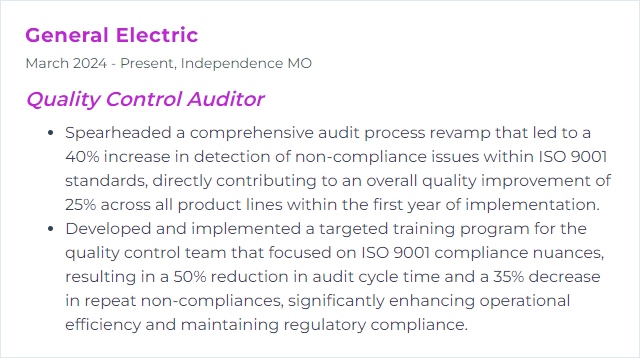
2. Six Sigma
Six Sigma is a data-driven discipline for shrinking variation and defects. DMAIC and DMADV give you the scaffolding; statistical tools deliver the proof.
Why It’s Important
You cut waste, stabilize processes, and deliver consistent outputs. Measurable, defendable, repeatable—exactly what audits demand.
How to Improve Six Sigma Skills
Get fluent with core stats: capability (Cp/Cpk), hypothesis tests, regression, DOE, control charts.
Run bite-size DMAIC projects end-to-end; stack small wins and document benefits.
Build facilitation muscles: charter clearly, align stakeholders, keep scope disciplined.
Standardize control plans and response plans so gains don’t erode after handoff.
Blend Lean with Six Sigma—remove waste first, then tune variation.
Use before-and-after metrics and visual storyboards to make improvements obvious.
How to Display Six Sigma Skills on Your Resume
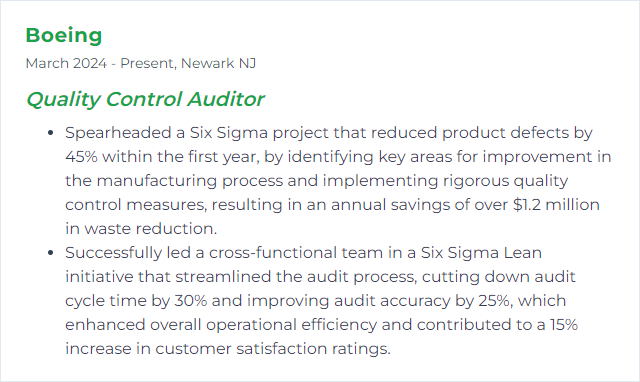
3. SAP ERP
SAP ERP (and today, often SAP S/4HANA) stitches together quality data across procurement, production, logistics, and service. The QM module, notifications, inspection lots, and certificates—your playground for traceability and control.
Why It’s Important
One system of record. Real-time status. Seamless links from nonconformities to corrective actions and supplier quality. Audits move faster when everything lines up.
How to Improve SAP ERP Skills
Fully configure QM processes: inspection plans, sampling procedures, usage decisions, and certificates by material and vendor.
Automate data checks and master-data governance to reduce rework and mismatches.
Adopt role-based apps (e.g., Fiori in S/4HANA) for clean, fast execution on the floor.
Connect analytics: build dashboards for defect trends, supplier performance, and cost of poor quality.
Create audit-ready reports and queries—repeatable, timestamped, and source-traceable.
How to Display SAP ERP Skills on Your Resume

4. Statistical Analysis
The craft of converting raw signals into decisions. Sampling plans, distributions, intervals, tests—then the story behind the numbers.
Why It’s Important
It separates noise from signal, shows whether a shift is real, and pinpoints where process control breaks down.
How to Improve Statistical Analysis Skills
Master control charts selection: X̄-R, I-MR, p/np, c/u. Pick based on data type and volume.
Use capability and performance indices correctly (Cp/Cpk vs. Pp/Ppk). Know the difference.
Design clean experiments: tight factors, randomized runs, enough power to see effects.
Validate assumptions (normality, independence, stability) before testing.
Visualize first—boxplots, histograms, Pareto—then test. Pictures reveal oddities fast.
How to Display Statistical Analysis Skills on Your Resume
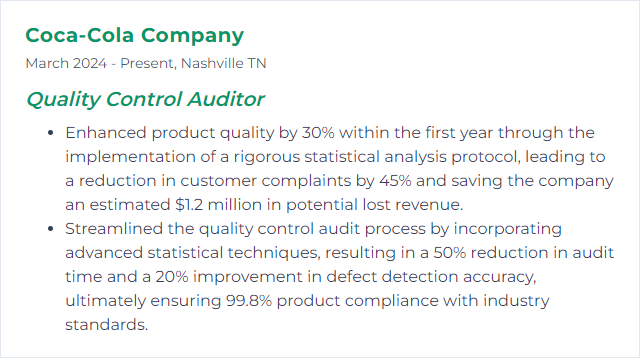
5. Lean Manufacturing
Lean hunts waste. It sharpens flow, trims delays, and makes problems visible. Quality loves visibility.
Why It’s Important
Less waiting, fewer handoffs, simpler processes—defects have fewer places to hide.
How to Improve Lean Manufacturing Skills
Run 5S with audits and accountability. Don’t just clean—standardize and sustain.
Map the value stream end-to-end; attack bottlenecks and overprocessing first.
Use visual management so abnormalities shout: status boards, kanban, andons.
Strengthen standard work with visuals and error-proofing (poka-yoke).
Practice quick changeovers (SMED) to cut queues and variability.
Promote Kaizen: frequent, small improvements owned by the team doing the work.
How to Display Lean Manufacturing Skills on Your Resume
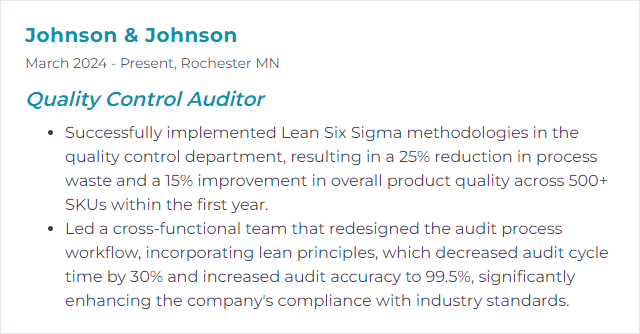
6. Quality Management Systems (QMS)
A QMS is the operating system for quality: policies, procedures, processes, and measurements that keep outputs aligned with requirements.
Why It’s Important
It enforces consistency, clarifies responsibilities, and anchors improvement. Without it, audits turn into scavenger hunts.
How to Improve Quality Management Systems (QMS) Skills
Audit regularly using risk-based plans aligned to process criticality.
Close the loop on nonconformities: clear root cause, targeted corrective action, effectiveness checks.
Keep documents lean and current; remove orphan procedures and duplicate forms.
Define KPIs at the process level (quality, delivery, cost, safety) and review them habitually.
Train for competence, not just attendance—verify skills through observation or assessment.
Use management reviews to drive decisions, not just minutes. Escalate barriers, assign owners.
How to Display Quality Management Systems (QMS) Skills on Your Resume
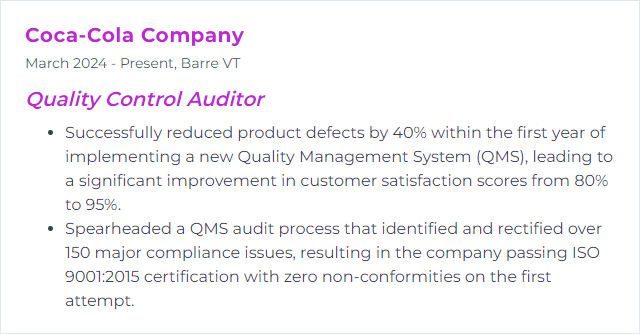
7. Root Cause Analysis
RCA digs past symptoms to the condition that actually created the defect. Then you fix that, not just the fallout.
Why It’s Important
It prevents recurrence. That’s the difference between firefighting and real control.
How to Improve Root Cause Analysis Skills
Define the problem crisply: where, when, how big, and what changed.
Use structured tools: 5 Whys, Ishikawa diagrams, fault tree analysis—pick what fits.
Triangulate evidence: data, observation, and process maps should agree.
Pilot corrective actions and verify effectiveness with hard metrics and time-bound checks.
Standardize successful fixes in procedures, training, and mistake-proofing devices.
How to Display Root Cause Analysis Skills on Your Resume
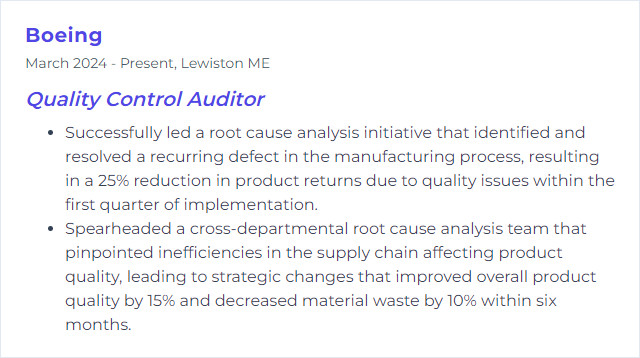
8. Auditing Standards
Auditing standards set the ground rules for planning, conducting, and reporting audits with integrity and objectivity. For quality auditors, guidance such as ISO 19011 helps frame competence, sampling, evidence, and risk-based approaches for management systems.
Why It’s Important
Standards bring consistency and credibility to audits of processes, data, and compliance—so findings hold up and improvements stick.
How to Improve Auditing Standards Skills
Keep skills current: refresh on risk-based auditing, sampling strategy, and evidence evaluation.
Strengthen professional skepticism—probe anomalies, corroborate claims, and challenge weak evidence.
Use tech wisely: analytics for trend scans, workflow for audit trails, templates for repeatability.
Calibrate with peer reviews and internal quality checks to reduce variability among auditors.
Protect independence and ethics: avoid conflicts, document judgments, and maintain confidentiality.
How to Display Auditing Standards Skills on Your Resume
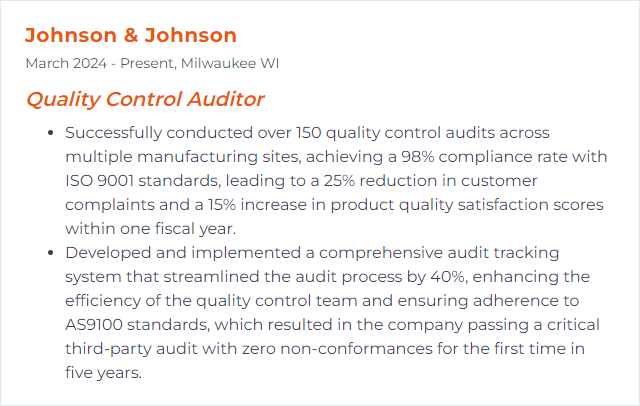
9. Process Improvement
Systematically redesign work to boost flow, reduce errors, and deliver what specs demand. Not louder effort—smarter layout.
Why It’s Important
Better processes mean fewer defects, quicker cycles, and cleaner handoffs. Quality rises as friction falls.
How to Improve Process Improvement Skills
Benchmark against internal top performers and external peers to spot gaps.
Combine Lean waste removal with Six Sigma variation control for durable results.
Use A3 thinking to clarify problem, analysis, countermeasures, and follow-up on one page.
Create visual SOPs and layered process audits to sustain changes.
Track pre/post metrics and verify benefits—cost of poor quality, lead time, first-pass yield.
How to Display Process Improvement Skills on Your Resume
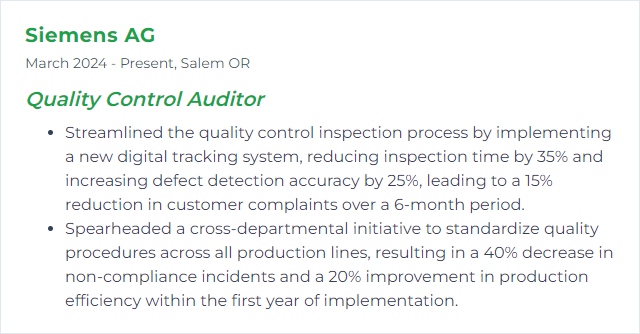
10. Risk Management
Spot risks early, judge their impact, and build controls that keep them contained. That vigilance keeps quality from being blindsided.
Why It’s Important
You prioritize what matters most, protect customers and compliance, and prevent costly surprises.
How to Improve Risk Management Skills
Structure risk registers by process with likelihood, impact, and control effectiveness ratings.
Apply FMEA to rank failure modes and drive preventive actions where the risk number demands.
Embed controls in standard work and automated checks, not just after-the-fact inspections.
Review risks in management meetings with trend dashboards and trigger thresholds.
Run scenarios and stress tests to see how processes behave when conditions shift.
How to Display Risk Management Skills on Your Resume

11. Data Interpretation
Turning measurements into meaning. You examine patterns, reconcile outliers, and tell the operational story the data whispers.
Why It’s Important
Without clear interpretation, numbers mislead. With it, issues surface earlier and decisions get sharper.
How to Improve Data Interpretation Skills
Clarify the question first—what decision will the data inform? Then choose the right metrics.
Contextualize: compare against targets, control limits, and historical baselines.
Use visuals tailored to the job: control charts for stability, Pareto for prioritization, scatter for relationships.
Cross-check with process knowledge and Gemba observations to avoid false conclusions.
Summarize insights plainly and recommend next actions with confidence intervals or effect sizes when relevant.
How to Display Data Interpretation Skills on Your Resume

12. Compliance Monitoring
Systematic checks that operations meet regulatory, customer, and internal requirements. Quietly relentless.
Why It’s Important
It reduces legal and safety exposure, protects reputation, and keeps certification audits calm and uneventful.
How to Improve Compliance Monitoring Skills
Build a living compliance matrix mapping clauses to processes, owners, controls, and evidence.
Adopt risk-based monitoring: sample more where impact and volatility are highest.
Automate reminders, training validity, and record retention so deadlines don’t slip.
Run periodic effectiveness checks, not just presence checks—prove the control actually works.
Close feedback loops with stakeholders; align compliance priorities with business goals.
Continuously refine based on audit findings, incidents, and regulatory changes.
How to Display Compliance Monitoring Skills on Your Resume

